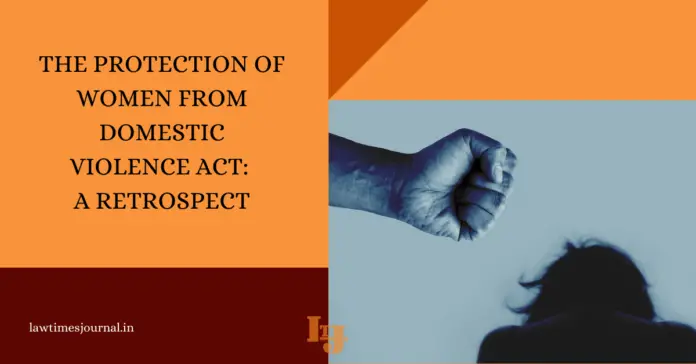
Domestic Violence is one of the very common terms heard everywhere, it’s not limited to only rural areas but major cases are found in urban areas as well. Domestic violence is a kind of abuse in marriage and cohabitation. Domestic violence is committed by a spouse in an intimate relationship against the other spouse. Domestic violence also involves violence against parents, elderly parents, and children. It has a number of forms- it could be in physical, emotional, sexual, verbal abuse. It ranges from subtle, coercive forms of marital rape and also leads to violent physical abuse like beating, choking, and mutilation of female genital, burning or throwing acid. Domestic murders include stoning, dowry death, honor killings, and bride burning.
Domestic violence is a worldwide phenomenon which is a major issue both nationally and internationally which includes the Vienna Accord of 1994 and the Beijing Declaration and the Platform for Action (1995). The United Nations Convention on Elimination of All Forms of Discrimination against Women (CEDAW), has recommended that the State should act to protect women against violence of any kind. India is considered to be a male-dominated country and the cruelty against women is being witnessed right from history, whether it is the Sati system, child marriage, prostitution (called as devadasi in history), dowry deaths, etc. There has been a grave challenge in obtaining legal redress for victims of domestic violence.
Domestic Violence legislation in India has historically emerged from dowry- related violence. Until the enactment of the Protection of Women from Domestic Violence Act in 2005, only two laws addressed domestic violence, the Anti- cruelty Statute, and Anti- dowry Statute. The Anti- cruelty statute targets acts of “extreme cruelty” against women which tends women to commit suicide or cause “grave injury”. The Anti- dowry provisions apply only to the situation in which domestic violence is inflicted in response to dowry demands.
PWDVA was a civil right and to make it more efficacious this law incorporates penal provisions in the event of a violation of protection orders issued by the Court. Research and many statistics also proved that even home is not the safest place for women.
The Protection of Women from Domestic Violence Act was enacted after a very long time campaign against domestic violence by the women’s movement in India. During the time of 1980s, there were a lot of cases of domestic violence in which the wives were killed mainly by the stove and then it received greater attention and this was reflected in the amendments creating new offenses in the Indian Penal Code. Article 15(3) of the Indian Constitution also gives special provisions to make laws for women and children. The legal recourse available for women seeking escape from violence within marriage was to rely on criminal law provisions including Section 498A, I.P.C. (penalizing physical, mental cruelty and dowry harassment). PWDVA is one of the most important landmark judgments, it vindicates the right of equality, non-discrimination and the right to life and personal liberty for women. It marks compliance by Indian state with its International obligations, under the Convention against Elimination of all Forms of Discrimination against Women (CEDAW).
There was a lot of arguments and debate happened regarding this particular act that it is ultra vires to the Constitution of India because it gives protection to women only but not to men. Although, there are very few cases where a man was being harassed. But now so many registered cases are being filed where men are also becoming the victims for Domestic violence but not more than women.
Very recently there is a Domestic violence case against husband- where the Satpur Police booked a man under the charges of domestic violence under Section 498A of Indian Penal Code. As per the complaint, he was harassing his wife from June 2019 to August 2019 to get money from her parent’s house because he wants to start a new business.
The Supreme Court stayed a Delhi high court ruling that parents-in-law could not evict an estranged daughter-in-law who was fighting a domestic violence case against them and their son from their house without providing alternative accommodation.
S.R. Batra v. Smt. Taruna Batra
The court held that the wife is only entitled to claim a right to residence in a shared household under Section 17(1) of the Act and a ‘shared household’ would only mean the house belonging to or taken on rent by the husband or the house which belongs to the joint family of which the husband is a member.
D. Veluswamy v. D. Patchaiammal
The Supreme Court has a given a wider verdict about the “aggrieved person” under Section 2(a) of the Act and enumerated five ingredients of a live-in relationship as follows:
1. Both the parties must behave like husband and wife and are recognized as husband and wife in front of society
2. To get married, a valid legal age is required
3. They must be qualified in order to get married, e.g., none of the partners should have any spouse living at the time of getting into the relationship.
4. They must be a voluntary cohabitation for a significant period of time.
5. They must have lived together in a shared household
“The views of the authors are personal“
Frequently Asked Questions
What is Domestic Violence?
Domestic violence is a kind of abuse in marriage and cohabitation. Domestic violence is committed by a spouse in an intimate relationship against the other spouse.
Is domestic violence always done against women?
No, it is not always committed against women. Domestic violence also involves violence against parents, elderly parents, and children. It has a number of forms- it could be in physical, emotional, sexual, verbal abuse.
What is the full form of CEDAW?
The United Nations Convention on Elimination of All Forms of Discrimination against women.





